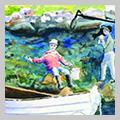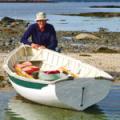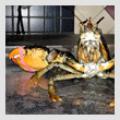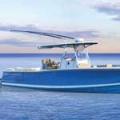Casco Bay Stripers: Magnificent fish in local waters
 Sunrise on the fishing grounds, looking out into Casco Bay from the mouth of the Harraseeket River. Photo by Rodney Lane
Sunrise on the fishing grounds, looking out into Casco Bay from the mouth of the Harraseeket River. Photo by Rodney Lane
From across the breakfast table, my good fishing buddy Tom momentarily looked up from his scrambled eggs. Without missing a bite, he said, “Rodney, big fish are caught the night before.”
I had just finished telling Tom the fish story I’m about to tell you. He has fished all over the world, and he knows that success in fishing, like most things in life, is in the preparation.
To begin, there are a few things you should know about this magnificent fish. Striped bass are summer residents of Maine’s coastal waters. Their spring arrival and fall departure are marked by natural events seen by landlubbers and fishermen alike. When the lilacs begin to bloom, the fish are not far behind. Come late September, as the days grow shorter and leaves turn color, the fish begin their southern journey—another of Mother Nature’s epic seasonal migrations.
 Fooled by a fly imitating a green crab, this husky Casco Bay striper is about to be released. Photo by Tom Ackerman
Fooled by a fly imitating a green crab, this husky Casco Bay striper is about to be released. Photo by Tom Ackerman
An oversized tail fin gives stripers great power. They can grow very large and can live more than 20 years. The largest striped bass ever caught in Maine, in the Sheepscot River, weighed 67 pounds. In Maine, a keeper fish must be between 28 and 35 inches in length. The big fish have husky shoulders, and the really big fish are almost always female.
Stripers arriving in May are hungry after their long journey from the Hudson and Delaware rivers and points farther south. They are easy to catch from a boat or shore. As summer’s warmth takes hold and the fish disperse to the outer islands of the bay seeking cooler water, they become elusive and more challenging to hook.
The islands, rock ledges, and inlets of Casco Bay—Sister Island, Pound of Tea, Old Tom Rock, Shipwreck Cove, and many more that shall remain nameless—are well known and frequented by the fish and fishermen alike. Daily tidal flows around these land masses serve up a smorgasbord of forage fish to waiting and hungry stripers.
If your boat is in the water by Mother’s Day, you can probe the places where you know the water is warmer and where fish will appear first. To many in New England, hooking and releasing that first striper of the season, regardless of size, is a bigger spring event than the Red Sox’s home opener and hearing peepers down in the pond.
The day you catch the first fish you text all your fishing buddies a three-word exclamation: “Stripers are in!” All cooped-up, winter-bedraggled Maine striper fishermen then exhale a sigh of great relief. Let the summer begin.
Now, here’s my story about the fish of my dreams. On a humid August morning before dawn, I motored away from the dock in South Freeport.
Two flies I had tied the night before fluttered in the draft created by the moving boat. According to the two local fishing guides, big striped bass were lurking in Casco Bay, and I was buying the optimism they were selling. The thought of catching a striped bass more than 40 inches long on a fly rod has teased me for many years.
Off a small island not far from South Freeport, I saw in the distance the boat of a local guide at anchor. I like to drift the southeast point of the island where the flooding tide quietly swirls around the point. Stripers often like this spot too.
One, two, three casts. Nothing. Seeing a whirl of water on the other side of the point, I repositioned the boat, and cast. A fish immediately ate my fly, and a pencil-thin strip of white froth arced across the water’s surface as my fly line snapped tight.
I knew immediately this was a big fish. When hooked in shallow water stripers run, and this fish, in the blink of an eye, stripped 90 feet of fly line off the reel. I was in awe of its power and brute strength. When I tightened the drag on the reel to slow the striper down, it pulled my entire 17-foot boat. From the bow, I glanced over my shoulder and saw a small wake trailing the stern. The fish took another 75 yards of backing line before I slowly gained ground.
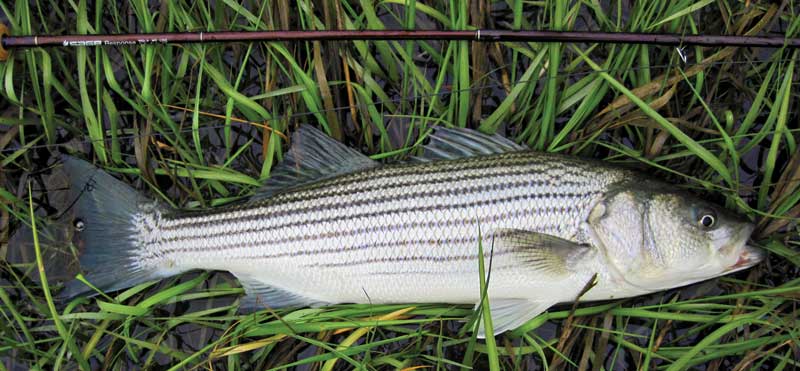 Photo by John Butler
Photo by John Butler
Within 15 yards, I could see that it was the biggest fish I have ever encountered as a fisherman. And there were two even larger fish tailing the one that was hooked. The striper made another run. The objective was now to get it to the boat and release it as quickly as possible.
Alongside, the fish was even bigger. I quickly unhooked it and attempted to measure it using my fly rod as a ruler—42 inches, I later guesstimated. With my two hands on its lower jaw, I attempted to lift it and found it much heavier than expected. On my second try, its head came out of the water, but then the fish slipped out of my hands and slowly drifted away. I froze in panic. It had not been properly released. Should I go overboard? While I remained locked in indecision, the striper shook its massive head and slowly swam away to deeper water.
With no picture or actual measurement, I cannot claim the achievement of catching a striped bass of more than 40 inches on a fly rod. The entry for that day in my fishing journal reads, “Striper—estimate 39 inches, 27 pounds, 12 years old. Pulled boat 70 yards.”
Alas, the goal of catching that 40-inch striped bass remains for next summer and likely the summer after. I plan to be there and better prepared.
Rodney Lane summers on Wolfe’s Neck in Freeport. His pending retirement has all Casco Bay stripers on high alert.
Related Articles
Share this article:
2023 Maine Boat & Home Show

Join Us for the Maine Boat & Home Show!
Art, Artisans, Food, Fun & Boats, Boats, Boats
August 11 - 13, 2023 | On the waterfront, Rockland, Maine
Click here to pre-order your tickets.
Show is produced by Maine Boats, Homes & Harbors magazine.








